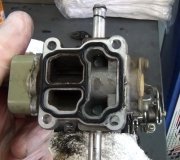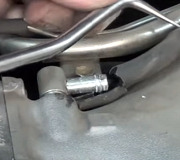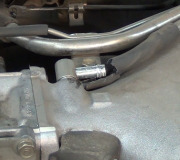Unfortunately my computer isn't smart enough to play videos, but engine performance really isn't one of my specialty areas. I was in tv / vcr repair for 40 years, and was an alignment specialist at a very nice Chrysler dealership all through the '90s. I taught Automotive Electrical and Suspension and Alignment for 9 years, so I have a lot of answers at the ready related to those things. That's why I jumped in and butted in to your private conversation with my "comments of value".
When I started at the dealership in late '89, we did see a lot of Caravan 3.0L engines with the air bypass passage around the throttle blade plugged with carbon. The result was an inability of the computer to bring idle speed up to the desired speed. With the better additives in even the cheapest of gas today, we haven't seen that problem since around the mid '90s. It never seemed to be an issue with any of the other engines.
From what I read here when people solve a problem by cleaning the back side of the throttle blade, it seems to be mostly related to a stumble or hesitation on acceleration, and my feeling is it seems to be more so on GM vehicles.
Also, for your reading excitement, the instructor at one of the Chrysler classes I attended discussed a couple of problems in the early years of fuel injection on truck engines. One was related to running fuel pressure too low, as in around 14 pounds. Gas will not burn in liquid form. Spraying it from an injector causes it to atomize and turn to a vapor by the time it crosses the intake runner and enters the cylinder. One problem they had was when the gas hit the cold intake valve face, it condensed back to a liquid, then burned very poorly in the cylinder. You got stumbling, poor throttle response, and low power for the first few minutes until the engine warmed up, then it ran fine. The fix for that in later years was to increase fuel pressure to over 45 psi, which is what almost all engines run today. The gas vaporizes better at that pressure, and has little tendency to condense back to a liquid.
The other problem was carbon build-up on the back side of the intake valves. Fuel would actually soak into that carbon, then it would be released as the engine warmed up. As I recall, that led to excessive emissions under certain conditions, but I don't remember any running problems. The fix for that was to run upper intake or combustion chamber cleaner through the engine to remove the carbon build-up. Those days are gone too with the better detergents and other additives in gas today.
Sunday, August 4th, 2019 AT 8:36 PM




